These exist with small margins top and bottom and control numbers. They also exist without control numbers and with broad margins top and bottom.
The ones without control numbers were at one time thought to be proofs, and that the ones with controls were from different sheets with rows closely spaced.
Hiscocks also made the statement that "The vertical of the stamps in the sheet was very close and top and bottom margins are very small or absent."
I contend that this was an assumption intended to explain the small vertical sizes.
| Shortcuts to different sections | ||||||
| Closely spaced ? | Coil evidence | EIM Home | Research | Plating-Group-1 | Plating-Group-2 | Plating-Group-3 |




Vertical pairs or blocks of these are very scarce without controls numbers. They appear to be non-existent with control numbers.
Isn't it strange that, despite the prevalence of long strips with control numbers, there is not one block of four or even vertical pair!
Why should that be ? Collectors prefer to get blocks rather than long strips. I show plenty of blocks for other companies.
| Images courtesy of Steve Lawrie. | |
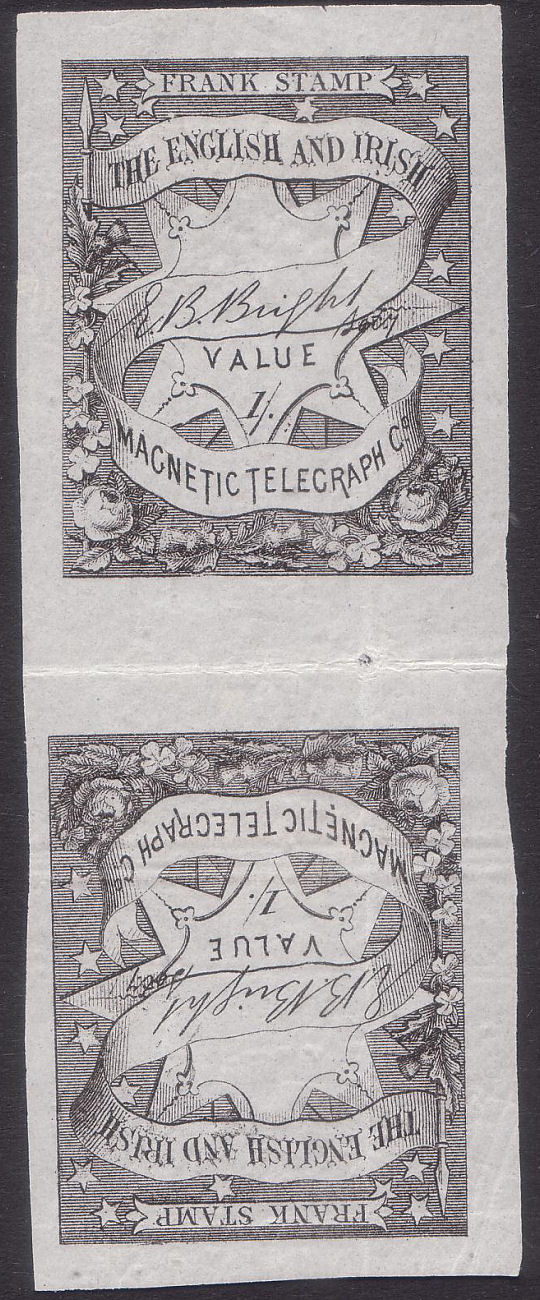 |
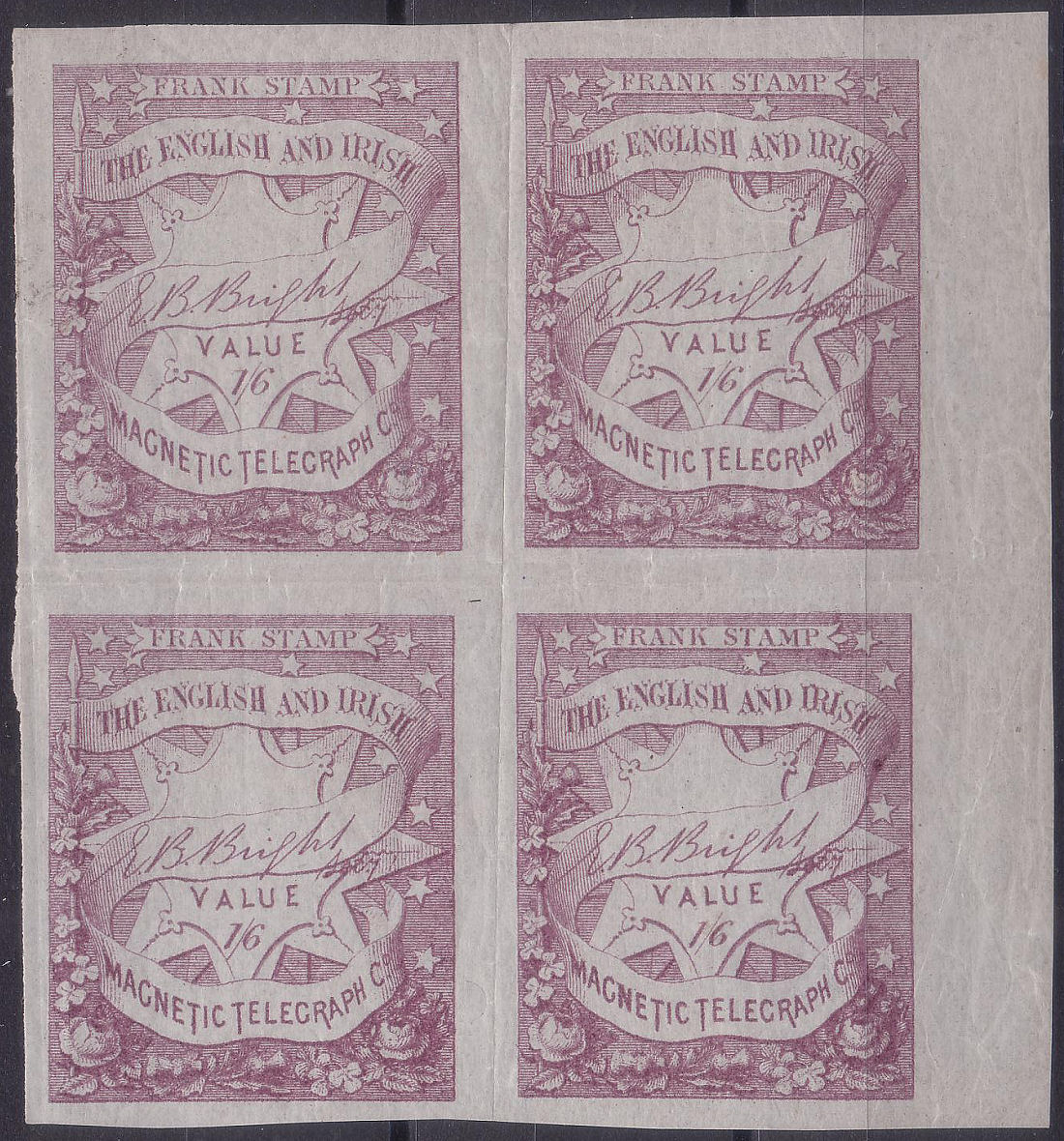 |
| 1s. no control tête-bêche pair | 1s6d. no control block of 4 |
I contend that the ones with controls were not printed in closely spaced rows as Hiscocks stated.
They were in fact all printed on the same sheets, but had the control numbers added and rows trimmed
to a standard height (about 1¾ inches) before use, probably to fit a dispenser of some kind.
There is evidence that at least some strips were joined to make (the first ?) coil stamps.
The ones without controls were thus remainders.
I present the evidence below .
Closely spaced ?
The ones with control number have narrow margins top and bottom and are often cut into top, bottom or both.
Hiscocks says "The vertical spacing of the stamps in the sheet was very close and top and bottom margins are very small or absent.
Stamps without controls are remainders and sell for rather less except where they have large margins top and bottom in which case they are probably proofs."
Langmead & Huggins go a step further and say "Those stamps without controls are thought to be proofs since they always have wide top and bottom margins.
Issued stamps had very narrow horizontal spaces between stamps and those with controls are always cut into at top and bottom."
Until recently I accepted that, though puzzled by the fact that both types appeared to show the same varieties and there were an awful lot of 'proofs' about.
I eventually realized something that should have been obvious to me a long time ago.
I have to thank Steve Lawrie in large part because of the number of his examples that I saw.
This table is only for stamps from his collection with control numbers (leaving out the strip shown above):
[Confining the table to these saves me having to continually update. Adding the others actually adds more support to the evidence]
| Value | not cut into | only top cut into | only bottom cut into | cut into top & bottom | total |
|---|---|---|---|---|---|
| 1/- | 0 | 1 | 0 | 9 | 10 |
| 1/6d | 1 | 0 | 3 | 11 | 15 |
| 2/6d | 1 | 2 | 2 | 10 | 15 |
| 4/- | 0 | 6 | 0 | 0 | 6 |
| 5/- | 1 | 0 | 2 | 9 | 12 |
| Totals | 3 | 9 | 7 | 39 | 58 |
L & H were not quite right about all being cut into, but about 95% were.
The thing that I suddenly realized though was that if about 95% are cut into at top, bottom or both, why do 0% of them show portions of the stamp above or below?
If someone cut between the rows with scissors and cut into some because the rows were close, then the cut-off parts should be on stamps above or below. None are!
There are no examples with controls showing part of another stamp above or below !
They were NOT closely spaced between rows !
Here are the best margined examples from the Steve Lawrie collection:
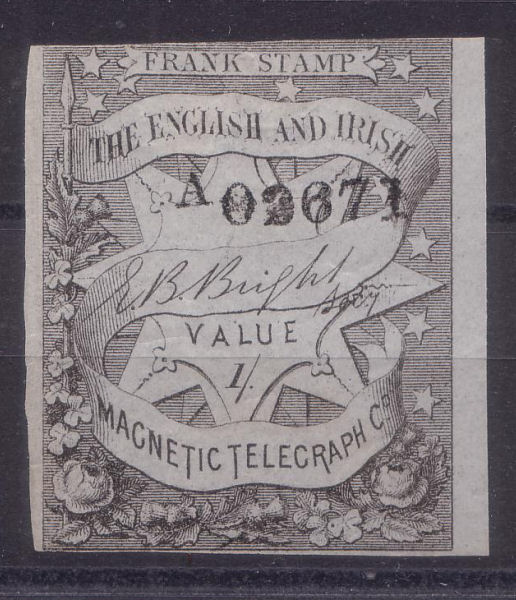
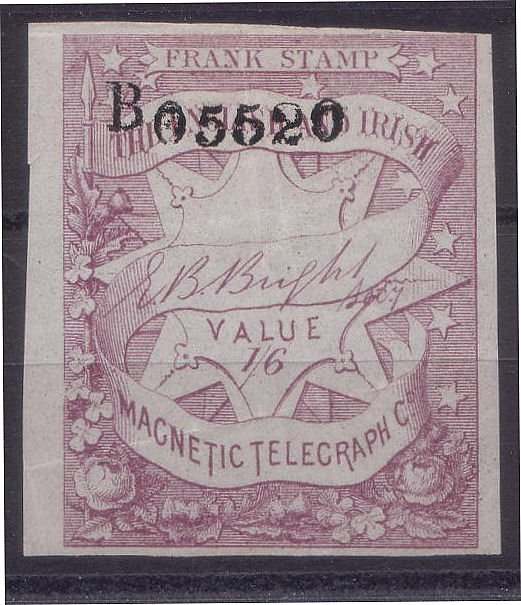
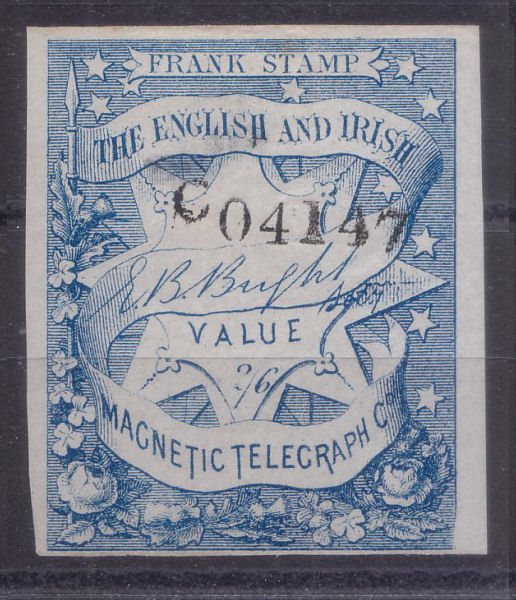
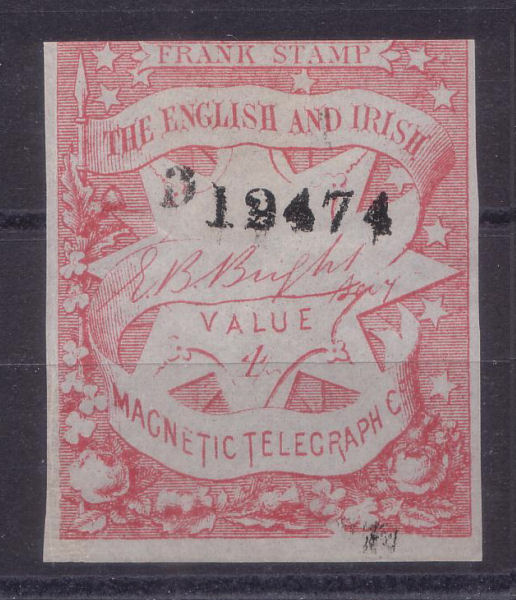
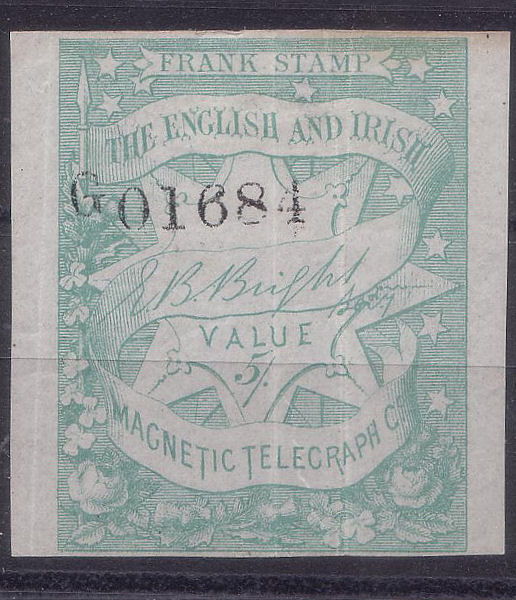
The heights of these in pixels are 1/- = 517px, 1/6d = 535px, 2/6d = 531px, 4/- = 522px and 5/- = 526px.
a spread of 517 to 535 pixels = 526 ± 9px (less than 2%), assuming 300dpi this is 1.75333 ± 0.03 inches or 44.535 ± 0.762 mm
This 5/- pair from the Steve Lawrie collection, is here to compare horizontal spacing with the pair below
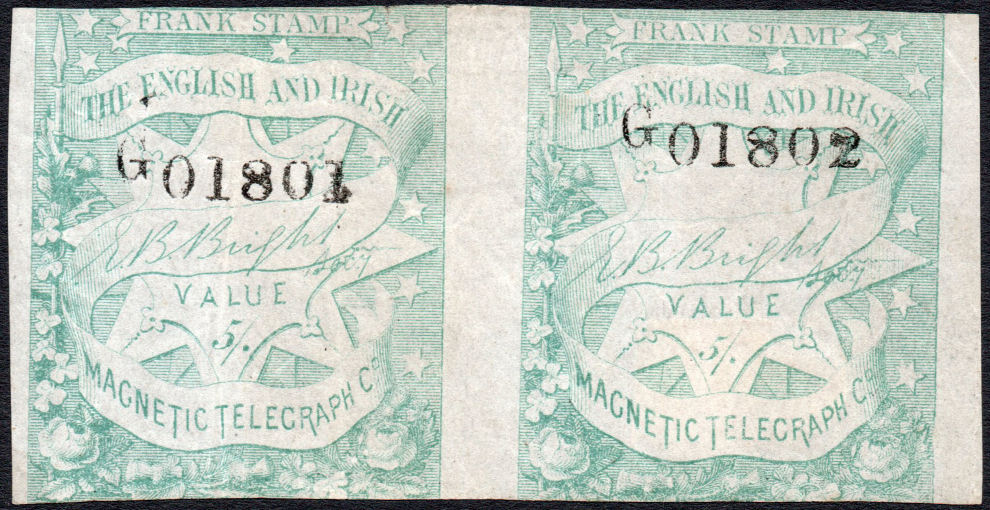
Now look at these, also from the Steve Lawrie collection:
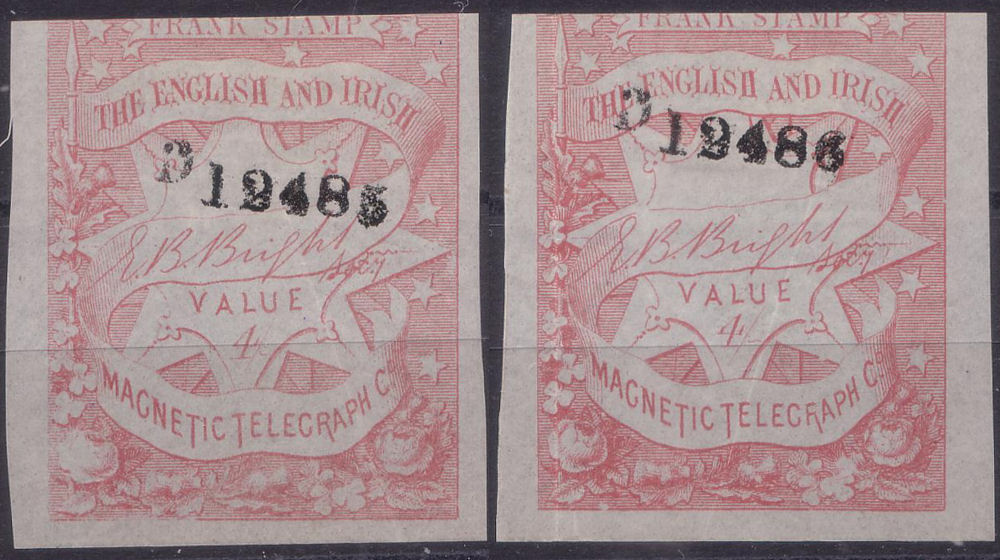
These ought to be adjacent stamps, though at least one has had the side trimmed for some inexplicable reason.
These measure 528 and 531 pixels respectively (1.76" and 1.77"). They appear to be well cut into at the top with plenty of margin at the bottom.
It is, I suppose possible that these are from the bottom of a pane, but the stamp shown above (D12474) is from a different row,
but also has plenty of margin at the bottom with no trace of the stamp below. It is unlikely that they are both from the bottom of a pane.
Notice that the sizes are still within the range of the ones above. Here is another that should be from the same sheet. Is it also from the bottom row ?
That's one long bottom row !
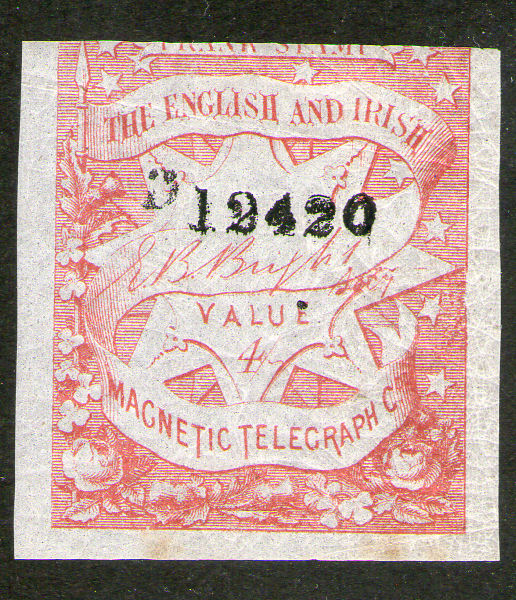
The lack of traces of other stamps above or below the serialized stamps, implies that these were not closely spaced. Why then are the margins so small and so many cut into?
My suggestion is that horizontal strips were deliberately trimmed to be a maximum of 1¾ inches in height for some reason.
One possibility is that they needed to be like that to feed into a numbering machine that applied the control numbers.
However the strips and individual stamps shown above do not seem to show the regularity of control-number positioning to be expected from such a machine.
I can think of two other possible reasons to do this, one is that they were limited to a certain height on the form and couldn't turn them sideways,
the other was that they were rolled up in a dispenser of some sort and stamps cut from it as required. The dispenser placing a limit on the height of the stamps.
The thing that bothers me about this idea is that 10 stamps to a roll is not many and it would
be more sensible to join say 10 rows (a sheets worth) together in a roll leading to rolls of 100 with 'coil-joins'.
I only have two scans with a hint of coil-joins, I would expect 20% of the ends should, but it is far less than that:
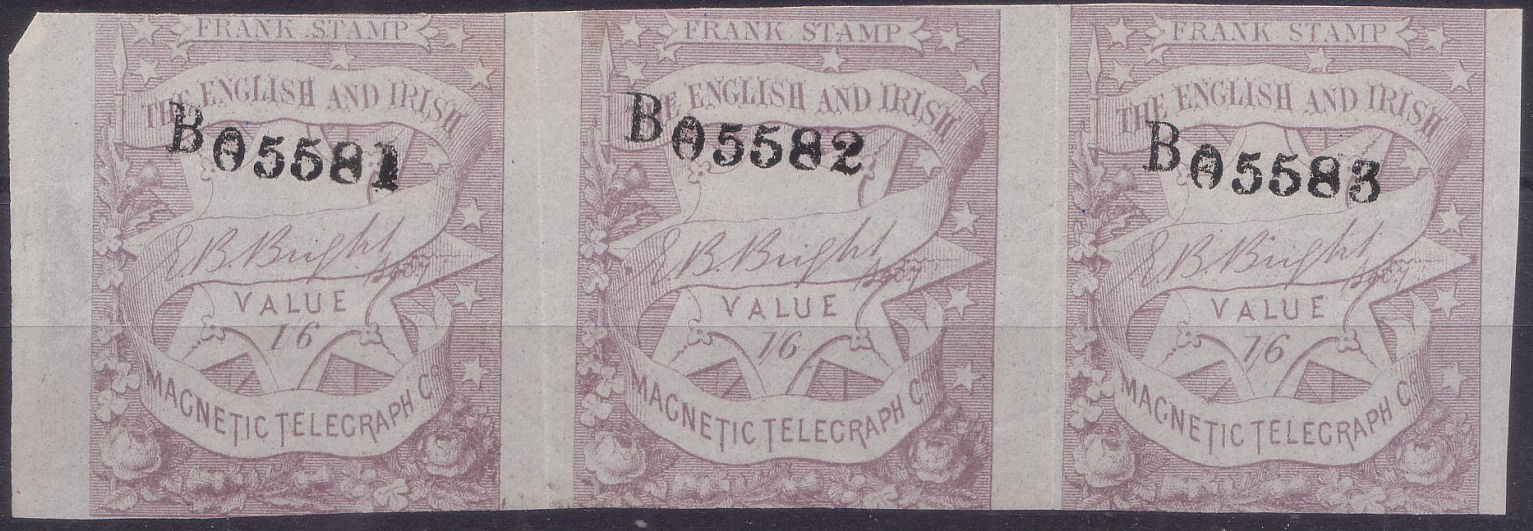
The one above (courtesy of Steve Lawrie) looks like there may be a join at the left end. The ones below have a hint of joins at the right.
I do not know the source of the 1/- image below, anyone recognise it? The 5/- is courtesy of TBTstamps on eBay.
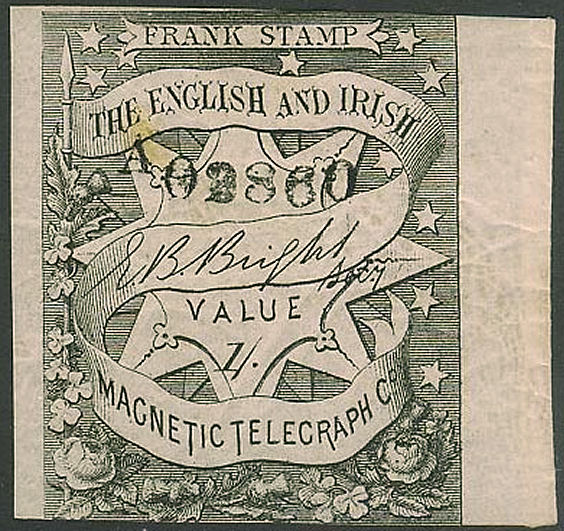
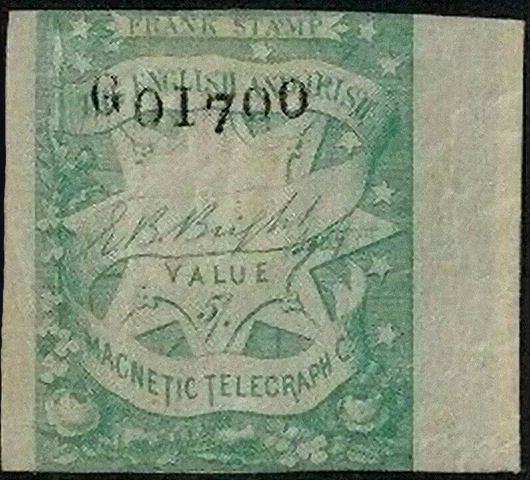
While looking for the 'conventional' coil joins that I expected, I came across a couple of other interesting items, and now have three.
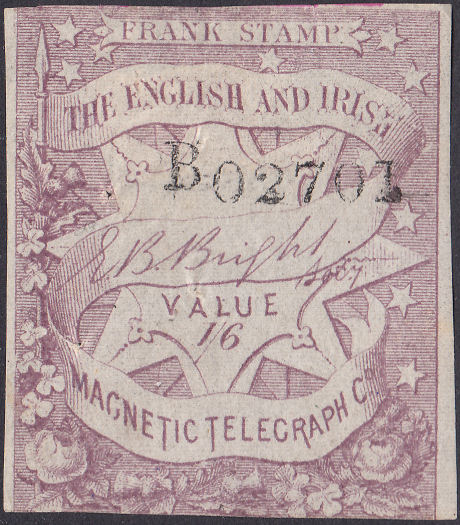 |
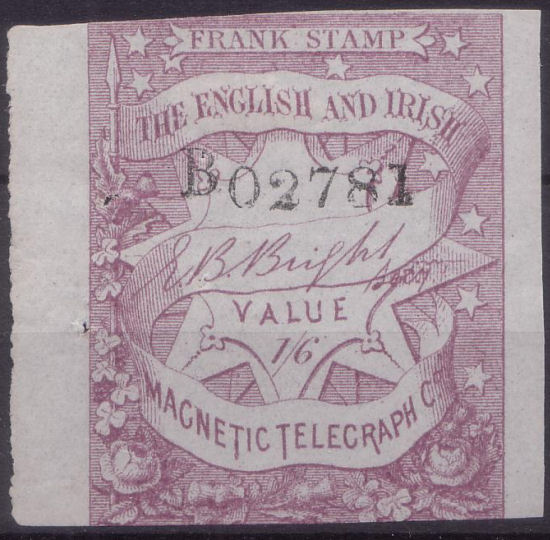 |
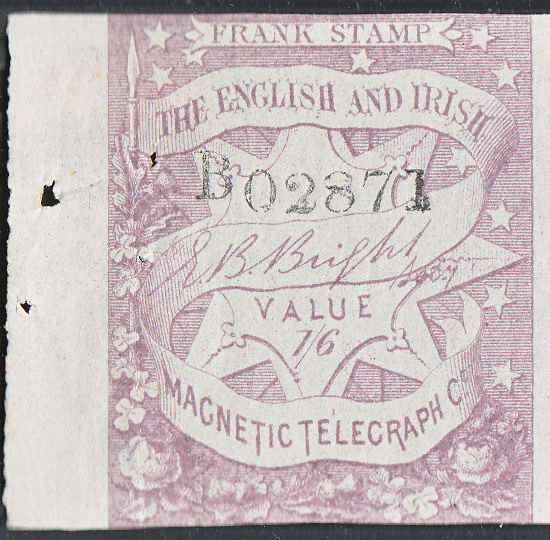 |
| B02701 mine, ex. eBay lot 221985886987 (stating pin holes) | B02781 courtesy of Steve Lawrie | B02871 now mine, ex. Conrad Graham strip of 7 |
| Is this what happened if the strip skewed in the dispenser ? | |
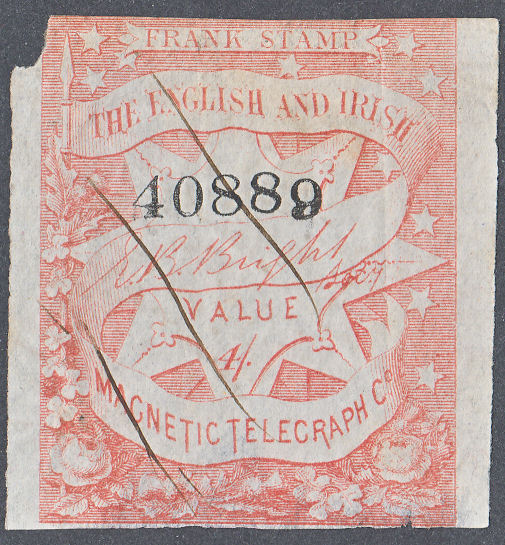 |
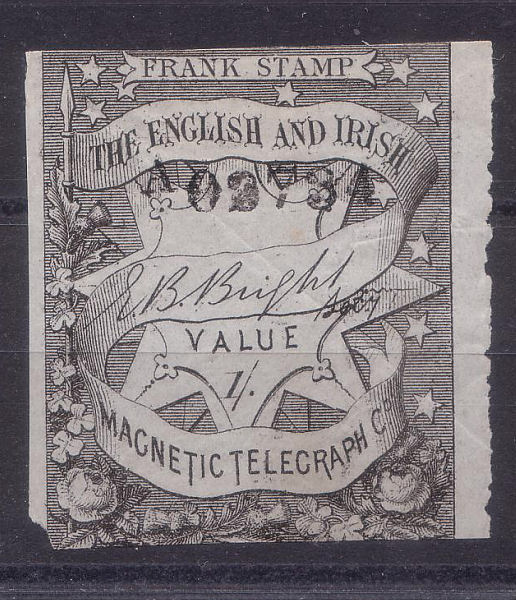 |
| 40889 (no letter, used) has an interesting notch in the top left corner. Maximum height 1.71 inches (514px). |
A02734 has a similar notch in the bottom left corner. Maximum height 1.66 inches (499px). |
Last updated 15th. November 2020
©Copyright Steve Panting 2012/13/14/15/16/17/18/19/20/21/22 except where stated.
Permission is hereby granted to copy material for which the copyright is owned by myself, on condition that any data is not altered and this website is given credit.